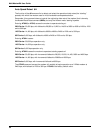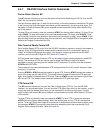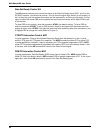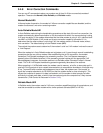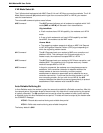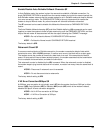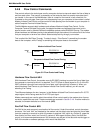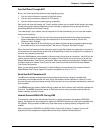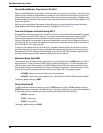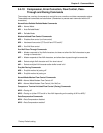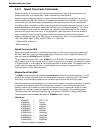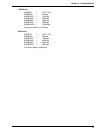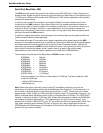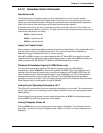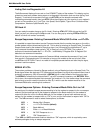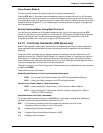
68
MultiModemBA User Guide
Normal Mode Modem Flow Control On &E11
When two MultiModems are connected in Normal mode (not using error correction), Xon/Xoff can be
used to control the flow of data between the modems. Flow Control can be turned on or off with the
Normal Mode Modem Flow Control commands. When the modems are connected in Reliable mode,
a different method of modem flow control is used, and the commands for Normal Mode Modem Flow
Control are ignored.
When you are using Speed Conversion in Normal Mode, you must activate the modem’s Normal
Mode Modem Flow Control (Speed Conversion is explained in Section 5.4.11).
Terminal/Computer Initiated Pacing &E13
As mentioned earlier, the modem can initiate flow control by issuing Xon/Xoff commands or toggling
the CTS signal on the RS-232C interface. The modem can also be configured to react to similar
commands and signals from the computer or terminal to which it is attached via the RS-232C
interface. We refer to the computer or terminal initiated flow control as Pacing. When the modem is
set for Pacing On, the modem will respond to the terminal or computer pacing. When the modem is
set for Pacing Off, it will ignore pacing.
In order for the modem to be set for Pacing On, a modem-initiated method of flow control must be
previously selected. Once this is done, the modem will respond to either Xon/Xoff commands, or to
the toggling of the RTS (Request to Send) signal on Pin 4 of the RS-232C interface, depending on
what you selected earlier as your Modem-Initiated Flow Control method.
Maximum Block Size &BS
The maximum size of Reliable mode data blocks can be controlled with the &BS command. MNP 3
sends blocks of 1 to 64 characters. MNP 4 and 5 typically send blocks of 1 to 256 characters and
LAP-M typically send 128 characters. For MNP Classes 4 and 5/LAP-M, reducing the block size to
64 characters may give a smoother flow of data, and better throughput on noisy phone lines. Using
smaller block sizes over good phone lines may cause a slight loss in throughput (speed).
AT&BS0 = Maximum transmit block size of 64 characters
AT&BS1 = Maximum transmit block size of 128 characters (LAP-M) 256 characters (MNP)
The factory default setting is &BS1.
Parity Selection #P
The #P command enables the setting of parity. AT#P0 selects no parity. AT#P1 selects odd parity.
AT#P2 selects even parity and is the default value. Note when setting up your data comm software, it
is critical that both your remote and local system's parity selection be set identically.
AT#P0 = no parity
AT#P1 = odd parity
AT#P2 = even parity
The factory default setting is AT#P2.



